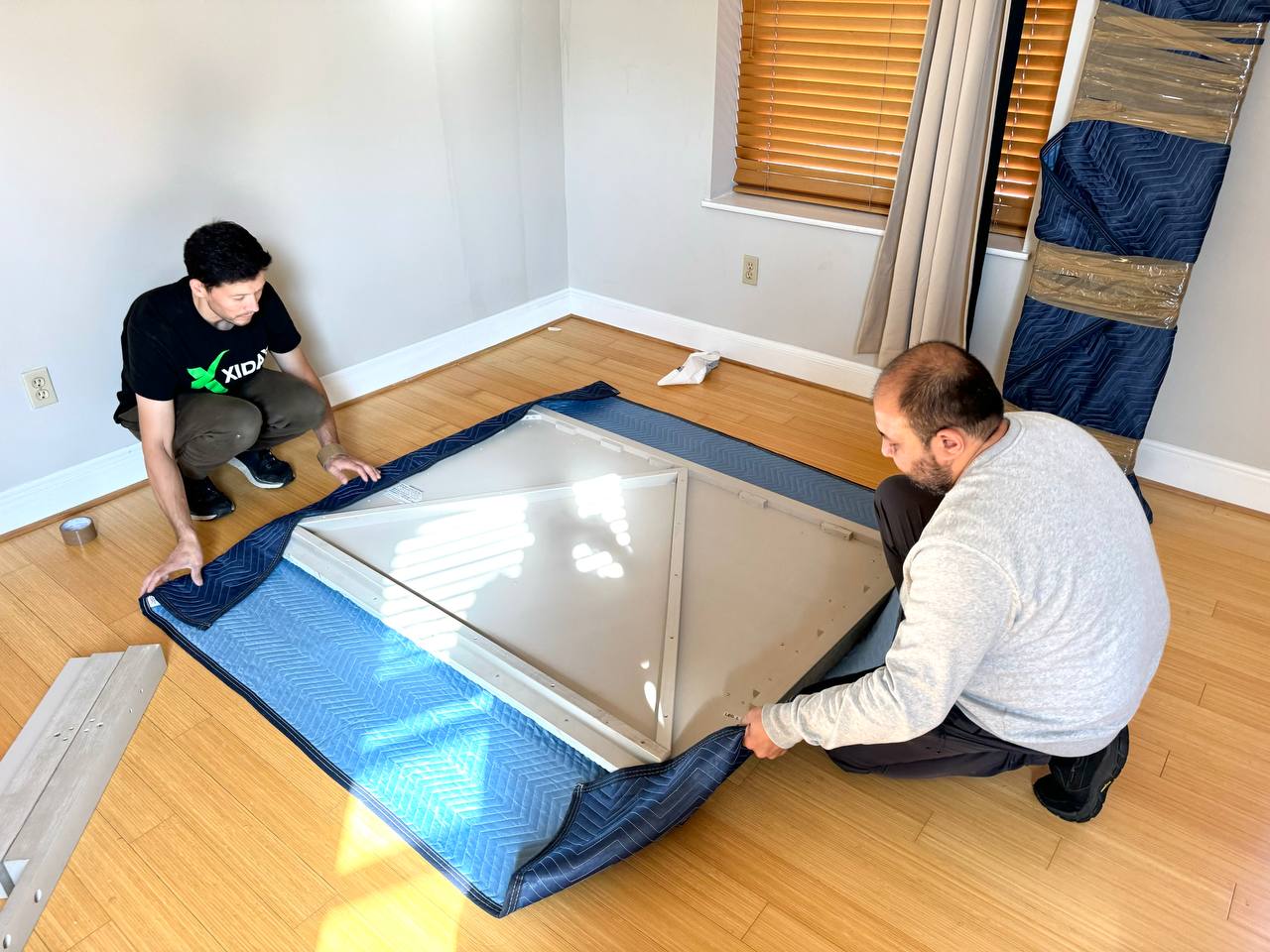The short answer is yes; movers nearly usually disassemble and reassemble furniture. In many circumstances, it is impossible for transporting some goods securely without it.
Moving homes or offices often requires dealing with large and intricate furniture pieces. Understanding the process of disassembling and reassembling furniture is critical to making a seamless move. AT Movers’ post attempts to walk you through every aspect of this often-overlooked phase of the moving process. From professional insights to do-it-yourself techniques, we’ve got you covered when it comes to moving furniture.
Expert Insights on Furniture Disassembly
Expert Guidance
AT Movers reveals that some furniture pieces almost always require disassembly. These include enormous bed frames, closets, massive shelving systems, and custom-made furniture. Disassembly not only makes transit easier, but also reduces the chance of damage.
Real-Life Examples
In a recent move from DC to North Carolina, a client’s enormous armoire did not fit through the doors. AT Movers’ staff expertly disassembled everything, guaranteeing safe transportation and reassembly at the destination. Another example was a sophisticated modular office arrangement that necessitated methodical dismantling and precise labeling for efficient reassembly.
Cost Considerations and Estimation
The cost of dismantling and reassembling furniture varies depending on the size of the furniture, its intricacy, and the time necessary. AT Movers often estimates these prices based on the quantity of components and the complexity of the work. Additional fees may apply to especially big or sophisticated products. For example, AT Movers charge an additional $100 for each 120 pounds of overweight item. See more on our pricing page.
DIY vs. Professional Disassembly
| Pro | Cons | |
| DIY Disassembly | Cost-effective; Personal control over the process. | Time-consuming; Risk of damage; Requires skill and appropriate tools. |
| Professional Disassembly | Efficient; Lower risk of damage; Expert handling. | Additional cost; Dependence on service schedules. |
Safety and Guidance for DIY
- Gather Necessary Tools: Screwdrivers, wrenches, a hammer, and a furniture dolly.
- Refer to Manuals: If available, use the furniture’s assembly manual for guidance.
- Take Photos: Document each step during disassembly for easier reassembly.
- Label Parts: Clearly label all parts and screws to avoid confusion.
- Exercise Caution: Be mindful of sharp edges and heavy parts.
- Seek Help: Don’t hesitate to ask for assistance with heavy or complex items.
Moving Company Policies and Insurance
Policies Overview
Moving companies, such as AT Movers, have certain regulations surrounding furniture disassembly and reassembly. These rules frequently state that movers are liable for dismantling and reassembling common furniture components. Items needing specific knowledge, such as antiques or custom-built installations, may fall outside of this category. It is critical to discuss your unique furniture items with the moving firm ahead.
Insurance Coverage
AT Movers provides insurance coverage for damages incurred during disassembly and reassembly. This coverage typically includes:
- Basic Liability: Covers a set amount per pound of damaged goods.
- Full Value Protection: Offers repair, replacement, or compensation for the item’s full value.
Note: Insurance terms may vary, and additional coverage options might be available.
Special Cases and Exceptions
Non-Recommended Disassembly Situations
There are situations where disassembly is not recommended:
- Antique Furniture: Risk of damaging the integrity or value.
- Integrated Installations: Such as built-in cabinets or fixtures.
- Fragile Materials: Items made from glass or certain plastics.
User-Friendly Tips and Tricks
🛠️ Disassembly Tips:
- Start Early: Begin the disassembly process well before moving day.
- Use the Right Tools: Ensure you have all the necessary tools on hand.
- Follow Instructions: If available, use the manufacturer’s guidelines.
- Keep Track of Parts: Store screws and small parts in labeled bags.
- Protect Surfaces: Use blankets or padding to protect furniture surfaces during disassembly and transport.
✅ Preparation Checklist:
- [] Identify furniture items needing disassembly.
- [] Gather necessary tools and materials.
- [] Allocate sufficient time for disassembly.
- [] Label and organize all parts and screws.
- [] Protect delicate or fragile components.
- [] Consult with movers about any special requirements.
Conclusion
To summarize, understanding the nuances of furniture disassembly and reassembly is a critical part of the moving process. Whether you choose DIY or expert treatments, being knowledgeable helps to ensure your furniture’s safety and integrity. Please do not hesitate to contact AT Movers if you want specialized solutions and competent help. We welcome your questions and opinions, and we hope to make your future relocation as stress-free as possible.


